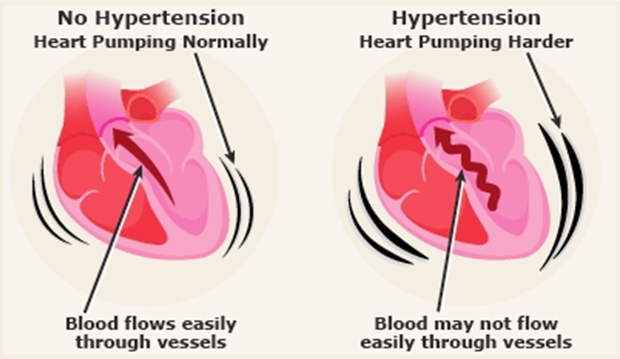A nurse is caring for a client who is scheduled to have surgery. In preparing the client for surgery, which of the following actions is considered outside the nurse’s responsibilities?
Explaining the procedure, risks, and benefits
Reviewing preoperative instructions
Obtaining test results
Ensuring that a signed surgical consent form was completed
Assessing the current health status of the client
The Correct Answer is A
Choice A reason: Explaining the procedure, risks, and benefits
Explaining the surgical procedure, including its risks and benefits, is primarily the responsibility of the surgeon. This is because the surgeon has the detailed knowledge and expertise regarding the specific procedure and can provide comprehensive information to the patient. The nurse’s role in this context is to support the patient by clarifying any information provided by the surgeon and ensuring that the patient understands the instructions. Nurses can also address any immediate concerns or questions the patient might have, but the detailed explanation of the procedure itself is outside their scope of practice.
Choice B reason: Reviewing preoperative instructions
Reviewing preoperative instructions is within the nurse’s responsibilities. Nurses play a crucial role in ensuring that patients understand and follow preoperative instructions, which may include fasting guidelines, medication adjustments, and other preparatory steps. This helps to minimize surgical risks and ensures that the patient is adequately prepared for the procedure. By reviewing these instructions, nurses help to reinforce the information provided by the surgical team and ensure patient compliance.
Choice C reason: Obtaining test results
Obtaining and reviewing test results is also within the nurse’s scope of practice. Nurses are responsible for ensuring that all necessary preoperative tests have been completed and that the results are available for the surgical team. This includes coordinating with the laboratory and other departments to obtain timely results and reviewing them to identify any potential issues that need to be addressed before surgery. This step is critical in ensuring patient safety and readiness for the procedure.
Choice D reason: Ensuring that a signed surgical consent form was completed
Ensuring that a signed surgical consent form is completed is a shared responsibility between the nurse and the surgeon. While the surgeon is responsible for obtaining informed consent by explaining the procedure, risks, and benefits, the nurse’s role is to verify that the consent form has been signed and documented appropriately. This verification process is crucial to ensure that the patient has given informed consent before proceeding with the surgery.
Choice E reason: Assessing the current health status of the client
Assessing the current health status of the client is a fundamental responsibility of the nurse. This involves conducting a thorough health assessment, including taking vital signs, reviewing the patient’s medical history, and identifying any potential risks or concerns that may affect the surgery. This assessment helps to establish a baseline for the patient’s condition and ensures that any necessary precautions are taken to promote a safe surgical outcome.
Nursing Test Bank
Naxlex Comprehensive Predictor Exams
Related Questions
Correct Answer is A
Explanation
Choice A reason:
Obtaining a 12-lead ECG is crucial for a client with a potassium level of 6.8 mEq/L, which indicates hyperkalemia. Hyperkalemia can cause life-threatening cardiac dysrhythmias, and an ECG can help detect these abnormalities early.

Choice B reason:
Suggesting that the client use a salt substitute is not appropriate in this situation. Many salt substitutes contain potassium chloride, which can further increase potassium levels and exacerbate hyperkalemia.
Choice C reason:
Asking the client to add citrus juices and bananas to her diet is also inappropriate. These foods are high in potassium and can worsen hyperkalemia.
Choice D reason:
While obtaining a blood sample for a serum sodium level can be part of the overall assessment, it is not the immediate priority. The primary concern with hyperkalemia is the risk of cardiac dysrhythmias, which makes obtaining a 12-lead ECG the most urgent action.
Correct Answer is ["0.2"]
Explanation
Step 1: Determine the concentration of morphine sulfate available. = 10 mg/mL
Step 2: Determine the dose of morphine sulfate to be administered. = 2 mg
Step 3: Calculate the volume to be administered using the formula: Volume to be administered = Dose ÷ Concentration
Step 4: Perform the division. Calculation: 2 mg ÷ 10 mg/mL = 0.2 mL
Step 5: Round the answer to the nearest tenth if necessary. = 0.2 mL (no rounding needed)
The nurse should administer 0.2 mL per dose.
Whether you are a student looking to ace your exams or a practicing nurse seeking to enhance your expertise , our nursing education contents will empower you with the confidence and competence to make a difference in the lives of patients and become a respected leader in the healthcare field.
Visit Naxlex, invest in your future and unlock endless possibilities with our unparalleled nursing education contents today
Report Wrong Answer on the Current Question
Do you disagree with the answer? If yes, what is your expected answer? Explain.
Kindly be descriptive with the issue you are facing.
